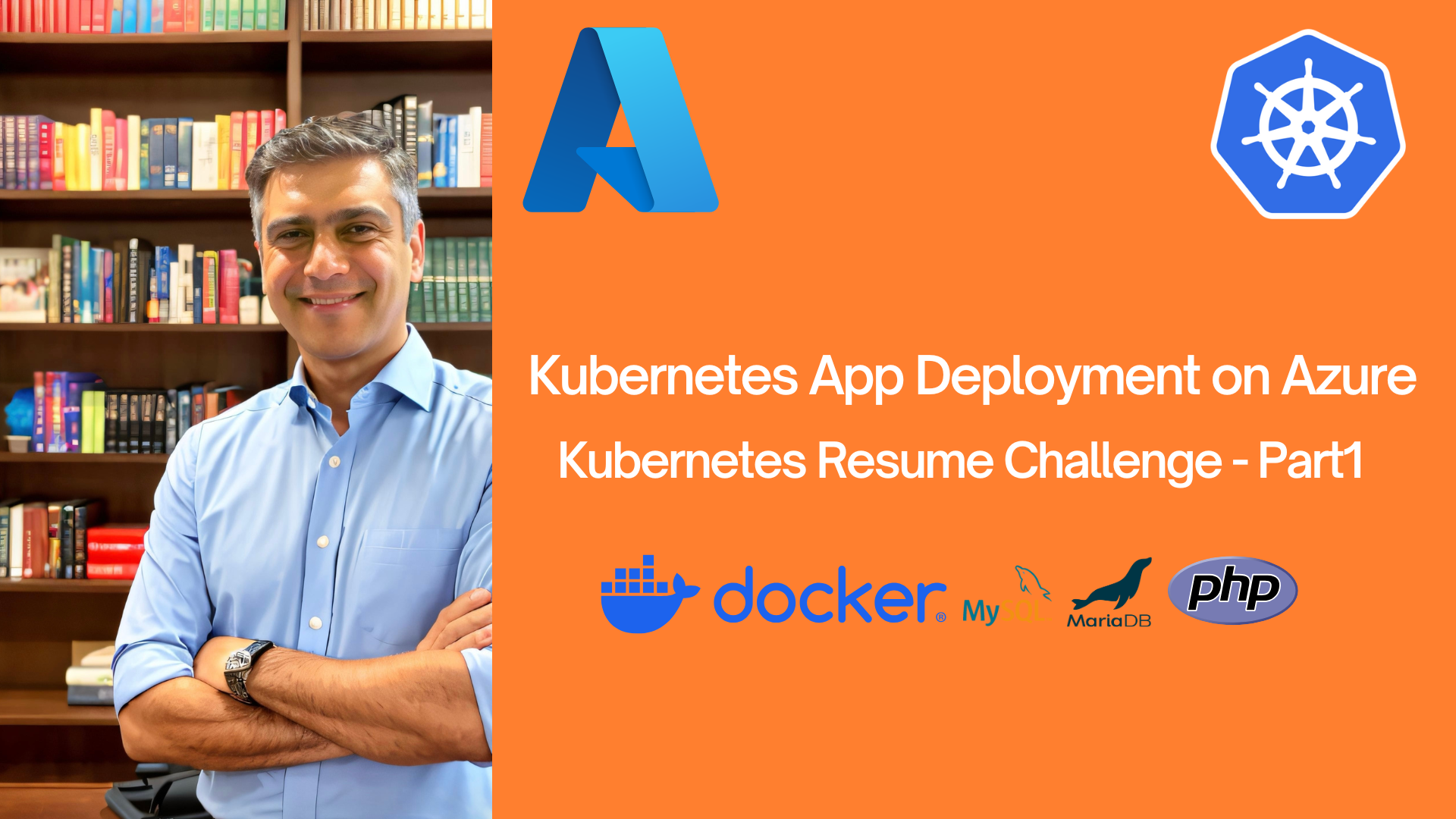Containerizing a PHP App with MySQL and Deploying on Kubernetes: A Step-by-Step Guide
 Masih Omid
Masih Omid
Video Tutorial is available at this link : this link
In this blog post, we will walk through the process of containerizing a PHP application with a MySQL database and deploying it on Kubernetes. This guide assumes you have a basic understanding of Docker and Kubernetes.
1. Project Overview
Our goal is to deploy a PHP application that interacts with a MySQL database on a Kubernetes cluster. We will start by reviewing the project files and the structure. A README file is provided for deploying on CentOS, but we will customize it for Kubernetes.
2. Initial Setup
Before diving into the containerization process, we need to set up our Kubernetes cluster and configure kubectl to interact with it efficiently.
Create a Kubernetes Cluster: Follow the instructions for setting up a cluster (reference the appropriate cloud provider documentation).
Configure kubectl: Alias
kubectltokfor convenience. Use the following command:alias k=kubectlCheck Cluster Connection: Ensure that your
kubectlis connected to the cluster by running:k api-versions
3. Creating the Dockerfile
The next step involves creating a Dockerfile to containerize the PHP application. The Dockerfile should use PHP 7.4 with Apache and include the MySQL extensions.
Dockerfile (Dockerfile):
# Use PHP 7.4 with Apache as the base image
FROM php:7.4-apache
# Install MySQL extension
RUN docker-php-ext-install mysqli
# Copy application source code
COPY . /var/www/html
# Expose port 80
EXPOSE 80
Make sure to update the database connection strings in your application to point to the Kubernetes MySQL service.
4. Building and Pushing the Docker Image
With the Dockerfile in place, it's time to build the Docker image and push it to Docker Hub. Follow these steps:
Build the Docker Image:
docker build -t yourusername/ecommweb:v6 .Push the Image to Docker Hub:
docker push yourusername/ecommweb:v6
This will allow Kubernetes to access the image for deployment.
5. Creating Kubernetes Deployment
Next, we will create a YAML file to define the deployment of our application in Kubernetes.
Deployment YAML (website-deployment.yaml):
apiVersion: apps/v1
kind: Deployment
metadata:
name: ecommweb
spec:
replicas: 1
selector:
matchLabels:
app: ecommweb
template:
metadata:
labels:
app: ecommweb
spec:
containers:
- name: ecommweb
image: yourusername/ecommweb:v6
ports:
- containerPort: 80
Deploy the application with:
kubectl apply -f website-deployment.yaml
6. Setting Up the Database
Instead of creating a custom database image, we will use the official MariaDB image to set up our database.
Pull the MariaDB Image:
docker pull mariadbCreate the Database Initialization Script: You can create a script to initialize the database, then include it in a Dockerfile.
Database Dockerfile (database/Dockerfile):
FROM mariadb
ENV MYSQL_DATABASE=yourdatabase
ENV MYSQL_ROOT_PASSWORD=yourpassword
Build and Push the Database Image:
docker build -t yourusername/mariadb . docker push yourusername/mariadbCreate a Database Deployment: Database Deployment YAML (database-deployment.yaml):
apiVersion: apps/v1
kind: Deployment
metadata:
name: mariadb
spec:
replicas: 1
selector:
matchLabels:
app: mariadb
template:
metadata:
labels:
app: mariadb
spec:
containers:
- name: mariadb
image: yourusername/mariadb
env:
- name: MYSQL_DATABASE
value: yourdatabase
- name: MYSQL_ROOT_PASSWORD
value: yourpassword
Deploy the database:
kubectl apply -f database-deployment.yaml
7. Configuring Kubernetes Services
To expose your application and database within the Kubernetes cluster, you need to create services.
Service YAML (website-service.yaml):
apiVersion: v1
kind: Service
metadata:
name: ecommweb
spec:
type: LoadBalancer
ports:
- port: 80
selector:
app: ecommweb
Deploy the service:
kubectl apply -f website-service.yaml
8. Troubleshooting Database Connections
If you encounter issues connecting the PHP application to the MySQL database, ensure that:
The database service name is correctly referenced in your application.
The environment variables are set properly in your deployment YAML.
Completed Code : https://github.com/masihtech/learning-app-ecommerce
Subscribe to my newsletter
Read articles from Masih Omid directly inside your inbox. Subscribe to the newsletter, and don't miss out.
Written by

Masih Omid
Masih Omid
I’m a seasoned Software Architect with a passion for building and sharing knowledge on creating real-world, complex software projects. Here, you’ll find in-depth tutorials on developing scalable, cloud-based solutions, leveraging powerful tools like Kubernetes and cutting-edge cloud technologies. Whether you're an aspiring developer or an experienced professional, my goal is to help you master the art of modern software architecture through hands-on projects and practical insights.